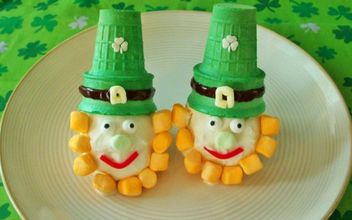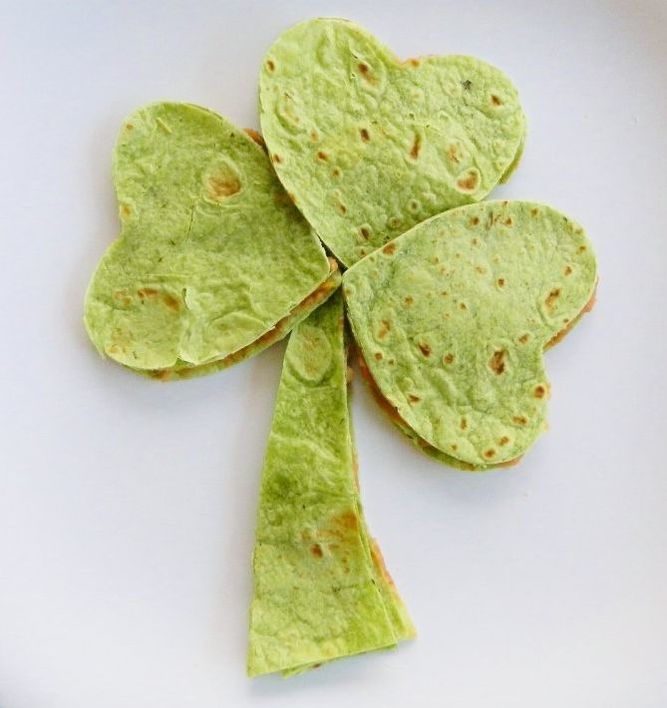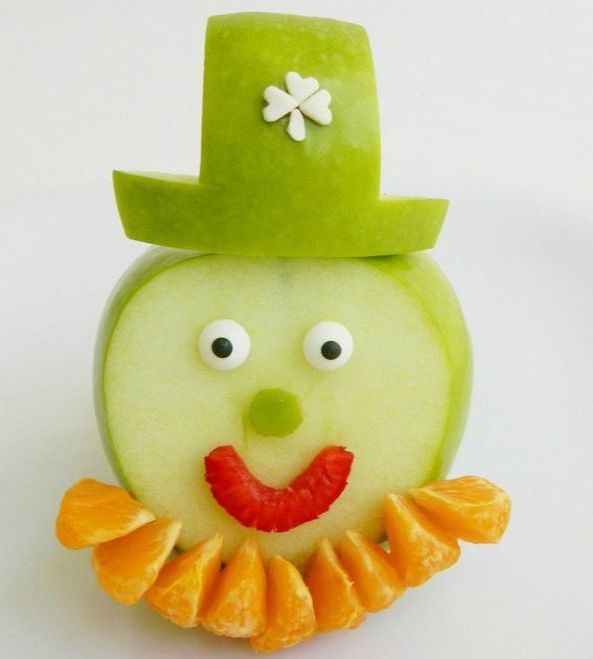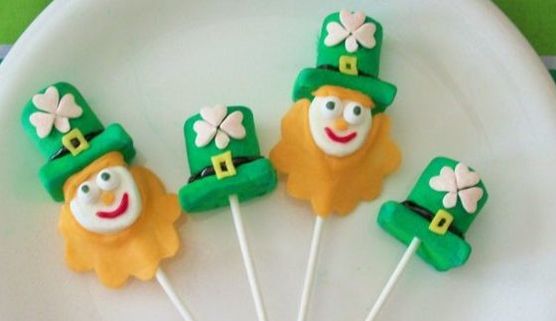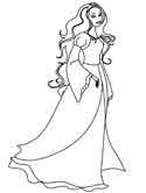It's a fun time of year, to be sure, to be sure.
Lá Fhéile Pádraig, ‘the Day of the Festival of Patrick’, is a cultural and religious celebration held on 17 March, the traditional death date of Saint Patrick (AD461), the Patron Saint of Ireland.
Ireland is known as the ‘Emerald Isle’, so named for its lush green landscape. Green is also the colour of Spring (March in the Northern Hemisphere) and the shamrock - a three-leaved plant used by Saint Patrick to explain the Holy Trinity to the pagan Irish.
However, the Irish connection with the colour green actually traces its roots to Irish political history.
The first association of the colour green with Ireland is from the 11th century pseudo-historical book Lebor Gabála Érenn (The Book of the Taking of Ireland), which forms part of the Mythological Cycle in Irish Mythology and describes the story of Goídel Glas who is credited as the eponymous ancestor of the Gaels and creator of the Goidelic languages (Irish, Scottish Gaelic, Manx). In the story Goídel Glas, who was the son of Scota and Niul, was bitten by a snake and was saved from death by Moses placing his staff on the snakebite. As a reminder of the incident he would retain a green mark that would stay with him and he would lead his people to a land that would be free of snakes. This is emphasized in his name Goídel which was anglicised to the word Gaelic and Glas which is the Irish word for green.
The colour green was further associated with Ireland in the 1640s, when the green Harp Flag was used by the Irish Catholic Confederation. Green ribbons and shamrocks have been worn on St Patrick's Day since at least the 1680s. The Friendly Brothers of St Patrick, an Irish fraternity founded in about 1750, adopted green as its colour. During the 1790s, green would become associated with Irish nationalism. The phrase ‘wearing of the green’ comes from a song of the same name, which laments United Irishmen supporters being persecuted for wearing green. The influence of green was more prominently observable in the flags of the 1916 Easter Rising such as the Sunburst Flag, the Starry Plough Banner, and the Proclamation Flag of the Irish Republic which was flown over the General Post Office, Dublin together with the Irish Tricolour (orange, white & green).
Traditional Irish legend held that wearing green made you invisible to Leprechauns.
Boston held its first St. Patrick’s Day parade in 1737, followed by New York City in 1762. Since 1962 Chicago has coloured its river green to mark the holiday. This year, from Rome to Rio and from London to Las Vegas, a host of buildings and sites around the world will be turning a shade of green to mark St Patrick's Day – including the Sydney Opera House and the Sky Tower in Auckland.
Ireland is known as the ‘Emerald Isle’, so named for its lush green landscape. Green is also the colour of Spring (March in the Northern Hemisphere) and the shamrock - a three-leaved plant used by Saint Patrick to explain the Holy Trinity to the pagan Irish.
However, the Irish connection with the colour green actually traces its roots to Irish political history.
The first association of the colour green with Ireland is from the 11th century pseudo-historical book Lebor Gabála Érenn (The Book of the Taking of Ireland), which forms part of the Mythological Cycle in Irish Mythology and describes the story of Goídel Glas who is credited as the eponymous ancestor of the Gaels and creator of the Goidelic languages (Irish, Scottish Gaelic, Manx). In the story Goídel Glas, who was the son of Scota and Niul, was bitten by a snake and was saved from death by Moses placing his staff on the snakebite. As a reminder of the incident he would retain a green mark that would stay with him and he would lead his people to a land that would be free of snakes. This is emphasized in his name Goídel which was anglicised to the word Gaelic and Glas which is the Irish word for green.
The colour green was further associated with Ireland in the 1640s, when the green Harp Flag was used by the Irish Catholic Confederation. Green ribbons and shamrocks have been worn on St Patrick's Day since at least the 1680s. The Friendly Brothers of St Patrick, an Irish fraternity founded in about 1750, adopted green as its colour. During the 1790s, green would become associated with Irish nationalism. The phrase ‘wearing of the green’ comes from a song of the same name, which laments United Irishmen supporters being persecuted for wearing green. The influence of green was more prominently observable in the flags of the 1916 Easter Rising such as the Sunburst Flag, the Starry Plough Banner, and the Proclamation Flag of the Irish Republic which was flown over the General Post Office, Dublin together with the Irish Tricolour (orange, white & green).
Traditional Irish legend held that wearing green made you invisible to Leprechauns.
Boston held its first St. Patrick’s Day parade in 1737, followed by New York City in 1762. Since 1962 Chicago has coloured its river green to mark the holiday. This year, from Rome to Rio and from London to Las Vegas, a host of buildings and sites around the world will be turning a shade of green to mark St Patrick's Day – including the Sydney Opera House and the Sky Tower in Auckland.
Saint Patrick's Day is celebrated in more countries than any other national festival. The day provides a fabulous opportunity to create crafts and food with rainbows, leprechauns, clovers and of course, lots and lots of GREEN!
Here are some fun ideas to share with your grandchildren, even if you have no Irish heritage whatsoever.
Here are some fun ideas to share with your grandchildren, even if you have no Irish heritage whatsoever.
|
MAKE SOME ST PATRICK'S DAY TREATS
There are some wonderful fun things you can make to bring St Patrick's Day live for grandchildren. The Community Table has 17 great ideas for treats. Find them HERE and make their St Patrick's Day a memorable one this year. OR CHECK OUT THESE RECIPES FOR SOMETHING MORE SUBSTANTIAL
Boxty Beer and Guinness Hand Pies Irish Soda Bread Irish Lemon Pudding Barm Brack |
St PATRICK'S DAY GAMES
Who's the Leprechan?
To play, choose one child to be "it" and send her out of the room. The rest of the kids choose one of them to be the leprechaun. Play some Celtic tunes and have the kids start dancing. The leprechaun chooses an Irish dance move and all the other players have to follow along and do the same move.
Bring the “it” player back to the room. She will observe the dancing and try to guess which player is the leprechaun. While she is observing, the leprechaun should randomly change the dance moves. It is up to the other kids keep an eye on the leprechaun and quickly change their dance moves as he does without letting on which player is leading.
When the guessing player correctly identifies the leprechaun, she gets to choose the next person to be sent out of the room as the guesser.
To play, choose one child to be "it" and send her out of the room. The rest of the kids choose one of them to be the leprechaun. Play some Celtic tunes and have the kids start dancing. The leprechaun chooses an Irish dance move and all the other players have to follow along and do the same move.
Bring the “it” player back to the room. She will observe the dancing and try to guess which player is the leprechaun. While she is observing, the leprechaun should randomly change the dance moves. It is up to the other kids keep an eye on the leprechaun and quickly change their dance moves as he does without letting on which player is leading.
When the guessing player correctly identifies the leprechaun, she gets to choose the next person to be sent out of the room as the guesser.
Gold Hunt
Since leprechauns are always searching for gold, gather your party guests and send them on a gold hunt of their own. Hide several gold coins (you can use chocolate gold coins, toy coins or even pennies) around the party space.
Divide guests into two teams. Give each team a pail and send them on a hunt to find as much “gold” as possible in two minutes (you can set the time for longer if you have hidden a lot of coins or have a large area to search). When time is up, have the teams count the coins in their pails. The team with the most coins wins.
Since leprechauns are always searching for gold, gather your party guests and send them on a gold hunt of their own. Hide several gold coins (you can use chocolate gold coins, toy coins or even pennies) around the party space.
Divide guests into two teams. Give each team a pail and send them on a hunt to find as much “gold” as possible in two minutes (you can set the time for longer if you have hidden a lot of coins or have a large area to search). When time is up, have the teams count the coins in their pails. The team with the most coins wins.
Gold coin pitch
To play this St. Patrick’s Day game, draw a rainbow on a piece of poster board. Place the rainbow poster on the floor and have kids stand a few feet away from it. One at a time, have them pitch coins, trying to land them as close as possible to the end of the rainbow. If a player gets close, the next player may try to knock that player’s coin away from the rainbow’s end. When everyone has had a turn, the player whose coin is closest to the desired spot wins.
To play this St. Patrick’s Day game, draw a rainbow on a piece of poster board. Place the rainbow poster on the floor and have kids stand a few feet away from it. One at a time, have them pitch coins, trying to land them as close as possible to the end of the rainbow. If a player gets close, the next player may try to knock that player’s coin away from the rainbow’s end. When everyone has had a turn, the player whose coin is closest to the desired spot wins.
|
COLOURING PAGES
Need something to occupy them for a while? There are all sorts of Irish themed colouring pages that you can print off here, courtesy of Colouring.WS. |
